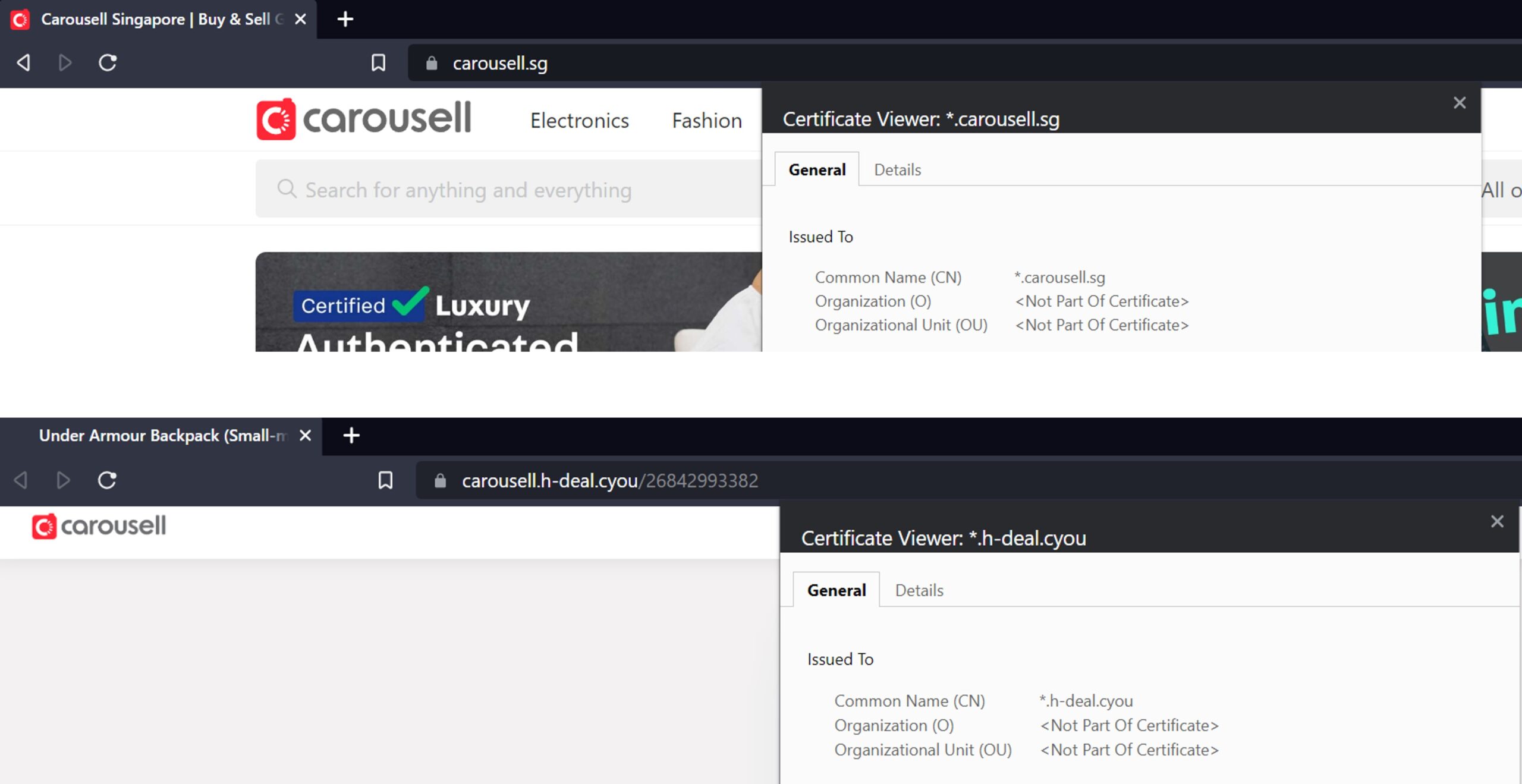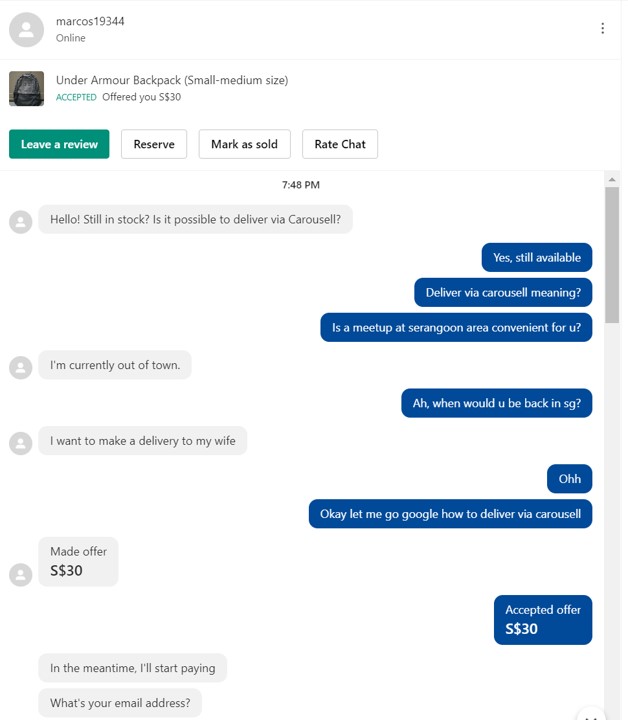
Introduction
Carousell is a Singaporean consumer to consumer (C2C) and business to consumer (B2C) online marketplace for buying and selling new and secondhand goods. On the evening of 22 October 2022, I spent 3 hours listing close to a dozen bags on my Carousell account by taking photos, writing descriptions and configuring a few settings.
Within the first hour after uploading all my listings, I received an offer inquiry from a potential buyer. He asked if the item was still available, to which I responded yes. He then quickly made an offer via the platform and started to pay. I was genuinely surprised by his quick response and decisiveness. However, it turned out that he was using a bogus payment method to scam others (aka sellers) of their money!
What Happened?
Here are screenshots from the entire conversation (I apologise for the poor resolution. I can’t retake them since Carousell has already removed this chat entirely after I reported it 😔):
“Red flags” that screamed “scam!”
- He asked for my email address
- The email he was referring to for payment ended up in my spam folder
- The link directed me to a suspicious URL
- I was asked to input my card details
- I was asked to input the full balance of my bank account, since that data was required to verify with my bank for transaction
- He said he would arrange for delivery, when sellers (aka me in this case) should be doing so
- He said no to using DBS PayLah, although that was way more convenient than card payment
Scam Protocol
1. Scam buyer asks for your email address
2. You receive an email in your junk / spam folder, which contains a link to continue with the transaction, for instance:
3. The link directs you to a seemingly legitimate site and you would be prompted to input your card details to receive payment, for instance:
4. You may also be asked to input your bank account’s balance. (In retrospect, this is probably for scammers to gauge the maximum amount they can scam you of)
5. When you click on “Continue”, scammers would attempt to ask your bank for money from your bank account. Your bank would be convinced that it’s a legitimate request since the scammers could provide correct card details. → Money fly
Reflections
Looking back, it was really foolish of me to believe that there exists such a decisive buyer who was willing to buy my item without much questioning. Typically, buyers would ask more questions, such as the quality of the item, or request more pictures. It was also my first time doing online transactions for Carousell. Till date, I had only done meetup methods before, where payments were made via cash or DBS PayLah. That had made me vulnerable to such scam attempts (but not anymore!).
I’m also ashamed to say that I did go through steps 1 to 5 of the entire scam protocol. However, I count myself super lucky to have a secure digital bank infrastructure in Singapore. My StanChart bank app requested approval from me for a foreign transaction of 140 euros to an unknown entity. At that point, I clicked on “reject” to prevent the transaction and knew that this was a scam buyer. Once bitten, twice shy.
How to prevent yourself from being scammed
1. Check the website’s certificate. Just because the url address contains the word “carousell” and there is a padlock, doesn’t always mean it’s a legitimate website application!

2. Read up on Carousell’s policy, here is a webpage I found useful: https://support.carousell.com/hc/en-us/articles/900006113806-Phishing-emails-or-suspicious-links-claiming-to-be-from-Carousell
3. Don’t provide your personal details and bank account or card details without caution. Be wary!
Thank you for reading! Check out my Carousell store if you’re interested.






